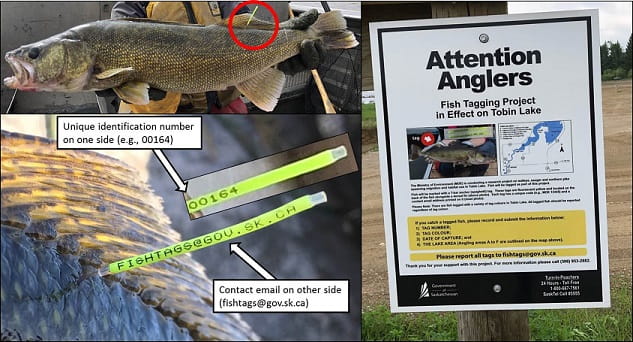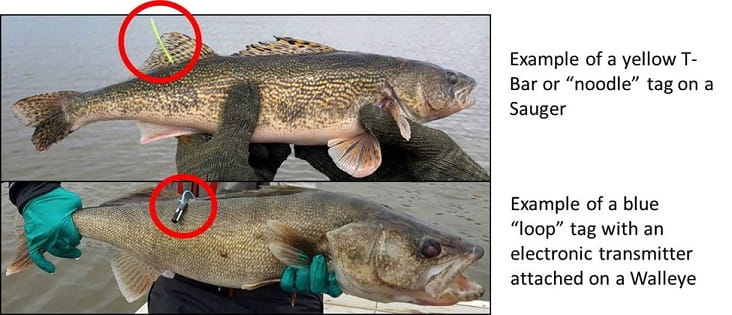Released on June 29, 2018
Fish tagging is a common research tool used to temporarily or permanently mark fish that are a part of a scientific study. Organizations who tag these fish often rely on anglers to report tags when the tagged fish are caught.
Tag reports provide valuable insight on fish movement and survival, which inform fisheries management. Anglers may notice tags along the back of a fish. The tag appearance may vary depending on the type of tag and its function. The most common tag is a T-bar tag or “noodle tag” which is typically located alongside a dorsal fin.
If an angler comes across a tagged fish, they should examine the tag for a unique identification number (typically three to six numerical digits) and contact information. The identification number should be recorded and reported to the email address or phone number printed on the tag as soon as possible. Alternatively, tags can be reported to a local Conservation Officer or Ministry of Environment Compliance Office.
It is also helpful to include additional information in the report, such as the tag colour, species, fish length or weight, location and date of capture. Photos of the fish are also very useful as part of the research. Please leave the tags on the fish if they are released back into the water.

The Government of Saskatchewan has conducted several tagging projects on waterbodies throughout the province. In addition, the province has partnered with other agencies and research groups on various fish studies that use different types of fish tags.
Some of the popular lakes for recreational angling where tagged fish may be found include: Tobin Lake, Last Mountain Lake, Buffalo Pound Reservoir, the Qu’Appelle Lakes, Lake Diefenbaker and Boundary Reservoir.
-30-
For more information, contact:
Environment Inquiry Centre
Regina
Phone: 800-567-4224
Email: centre.inquiry@gov.sk.ca
Email: fishtags@gov.sk.ca


